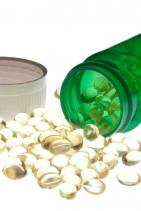
What is Vitamin D
28 January 2020
What is the natural source of Vitamin D?
Most people get little Vitamin D in their diet. Only a few natural foods such as oily fish and eggs (20 – 40 units per egg) contain significant amounts of Vitamin D. A few foods are fortified with small amounts of Vitamin D (e.g. margarine and some breakfast cereals). All formula milks are fortified, but plain cow’s milk is not fortified in the UK. Breast milk generally contains little Vitamin D. Sunshine is the main source of Vitamin D. However, Vitamin D can only be made in our skin by exposure to sunlight when the sun is high in the sky. Therefore in most of the UK from November to February, and in Scotland from October to March, Vitamin D cannot be made from sunshine.
Whether ingested orally or made in the skin under the action of ultraviolet light, Vitamin D is converted to 25hydroxyVitaminD in the liver and then on to 1,25-dihydroxyVitaminD in the kidney. It is this which has potent metabolic effects.
There are two types of Vitamin D: Ergocalciferol (Vitamin D2) a plant product and Colecalciferol (Vitamin D3) which is a fish or mammal product. The BNF and many other authorities regard them as interchangeable. However, “Activated Vitamin D” preparations such as Calcitriol or Alfacalcidol SHOULD NOT BE USED for the treatment of simple Vitamin D deficiency. They should only be used for the treatment of complex cases by specialists. They are ineffective in treating simple Vitamin D deficiency and can cause severe adverse effects, particularly hypercalcaemia. Simple Vitamin D is safe and is the treatment for D deficiency.
What is Vitamin D deficiency?
Vitamin D deficiency historically has been defined as a blood level of 25hydroxyVitaminD below 25nmol/L. There is scientific debate about the optimal Vitamin D blood level. Current practice in the UK, as recommended by the British Paediatric and Adolescent Bone Group, is to continue to use that as the defined level of deficiency, and to define “insufficiency” as between 25 and 50nmol/L. Some laboratories and authorities use higher levels but this current practice is based on robust evidence of benefits to bone health when levels are more than 50nmol/L. Vitamin D deficiency can cause seizures and cardiomyopathy in infants, rickets and poor growth in children and muscle weakness at any age.
Signs of lack of Vit D
|
Infants |
Seizures, tetany and cardiomyopathy |
|
Children |
Aches and pains; myopathy causing delayed walking; rickets with bowed legs, knock knees, poor growth and muscle weakness |
|
Adolescents |
Aches and pains, muscle weakness, bone changes of rickets or osteomalacia |
If a patient is diagnosed with Vitamin D deficiency, the family should be screened or treated. At least screening by history taking should take place, and prevention advice given. Investigation of other family members by blood testing may be indicated. Alternatively, prescribe a Vitamin D supplement to those sharing the same sun exposure and diet.
After treatment, children who were deficient or insufficient should continue long term low-dose supplements until completion of growth, unless lifestyle changes (diet / sun exposure) are assured.
Treatment of Deficiency
|
Up to 6 months |
1,000 units - 3,000 units Daily |
4 – 8 weeks |
|
6 months-12 years |
6,000 units Daily |
4 – 8 weeks |
|
12-18 years |
10,000 units Daily |
4 – 8 weeks |




